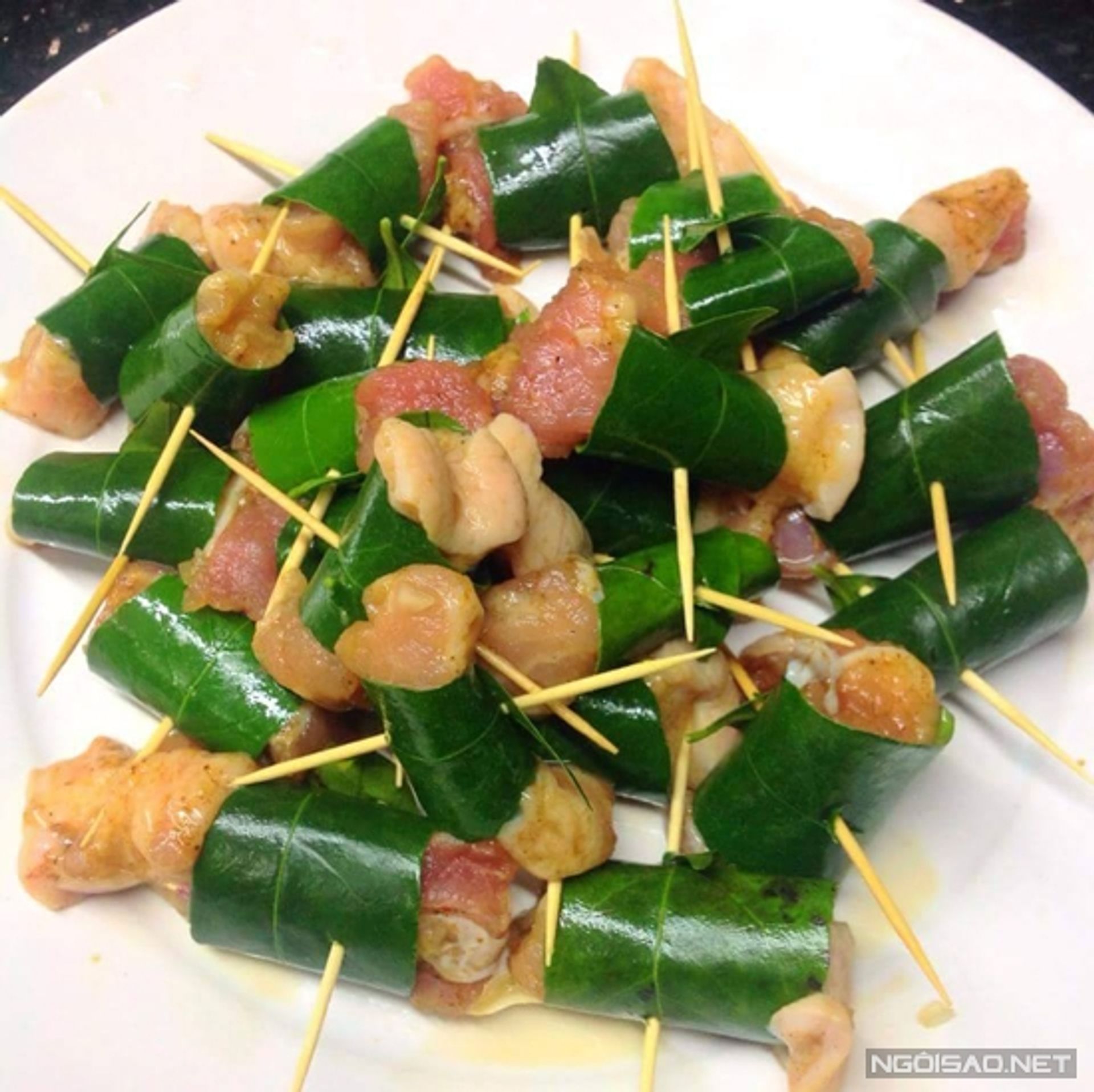Spring roll with pomelo leaves is an extremely famous specialty dish no less than Lam rice in Hoa Binh. At first glance, this dish looks a bit like spring rolls. However, when you taste it, you will immediately notice the difference. When you try it, you will feel that this dish is very unique because it is elaborately processed in the filling. Specifically, the core of this dish is sliced lead-shaped meat and added with dried onions and fish sauce, then wrapped in pomelo leaves and then grilled with bamboo tongs.
The sizzling pork fat flowing on the embers makes up the delicious meat flavor and the natural flavor of Hoa Binh mountains and forests. Thanks to that, when you enjoy this pomelo leaf roll, you will find that it is not only fragrant and sweet, but also has a gentle and delicate aroma of grapefruit leaves, the smell of bamboo clips and extremely unique charcoal.
Source: Collected internet.
Festivals are one of the special features in Vietnamese culture. The diversity of ethnic religions makes Vietnam one of the countries with many festivals. Festivals are held to commemorate cultural events. Community spirit is the essence of every festival. There are two parts to festivals: ceremony and festival. The ceremony is to express respect for divinity and people's dreams of health, wealth, luck and happiness for themselves and their loved ones. Festivals are unique features of culture, community, religion, etc. The two biggest traditional festivals are Lunar New Year and Hung King's Death Anniversary. During Lunar New Year, each region has other festivals to celebrate such as Lim Festival in Bac Ninh province, Giong Festival in Soc Son, Perfume Pagoda Festival in Hanoi. Hung King's death anniversary is held every year from the 8th to the 11th of the third lunar month. It is organized so that everyone remembers their roots. With many landscapes recognized by UNESCO as world natural heritage and a wealth of unique regional cultural spaces, Vietnam is a legendary land and also a storehouse of attractive material for filmmakers to exploit. long lasting waterfall.
The aroma of a cup of Vietnamese coffee is a great alarm clock. The fertile basalt soil of the Central Highlands grows quality robusta coffee trees. These coffee beans are one of Vietnam's most beloved export products to the world. Vietnamese coffee culture is very diverse, you can easily count hundreds of coffee shops in big cities. Vietnamese people make traditional coffee using aluminum filters. Watching time pass while waiting for a cup of coffee to drip makes this drink even more flavorful.
Vietnam has an area of 331,212 km², a land border of 4,639 km, a coastline of 3,260 km, and shares a maritime border with Thailand through the Gulf of Thailand and with China, the Philippines, Indonesia, Brunei, Malaysia through the East Sea. Vietnam claims sovereignty over two disputed geographical entities in the East Sea, the Hoang Sa archipelagos (which has lost control in reality) and Truong Sa
Vietnam's history began from 1 to 2 thousand years BC. Over many centuries with the Ly, Tran, Le, and Nguyen dynasties, from the mid-19th century, Vietnam became a French colony. After the August Revolution, the Democratic Republic of Vietnam was born. The Battle of Dien Bien Phu in 1954 marked the end of the French in the territory, but Vietnam was divided into two countries: the Democratic Republic of Vietnam in the North and the Republic of Vietnam in the South. After the events of April 30, 1975, Vietnam was unified and from July 2, 1976, officially named the Socialist Republic of Vietnam.

